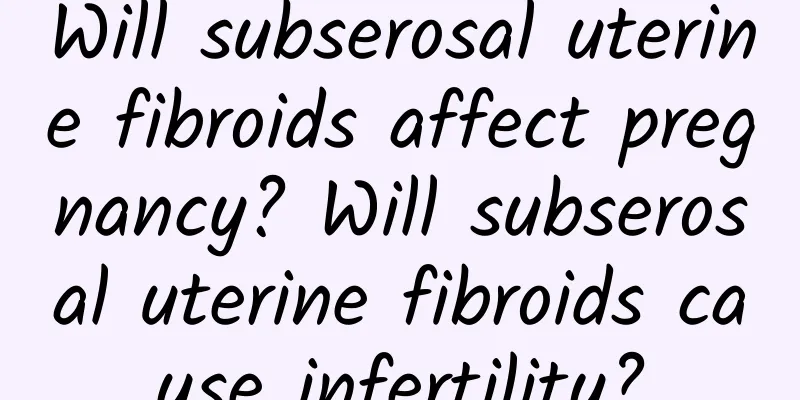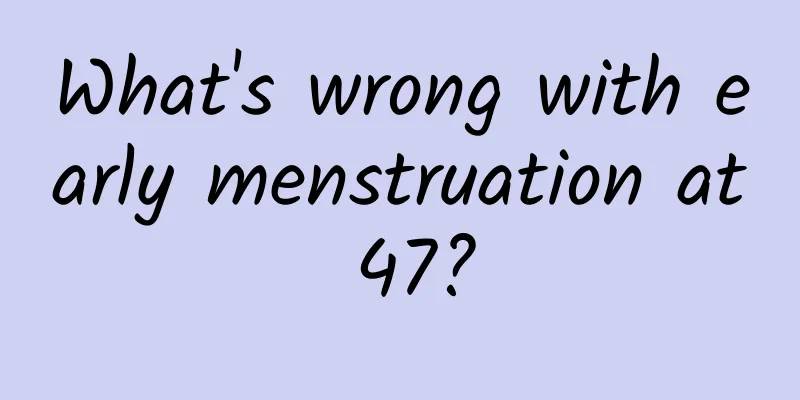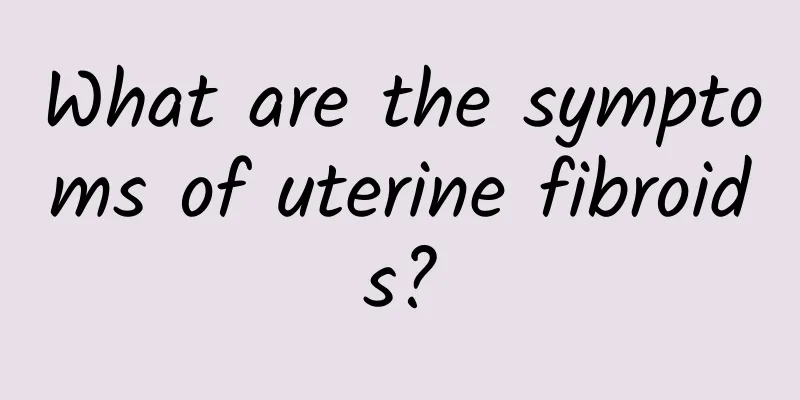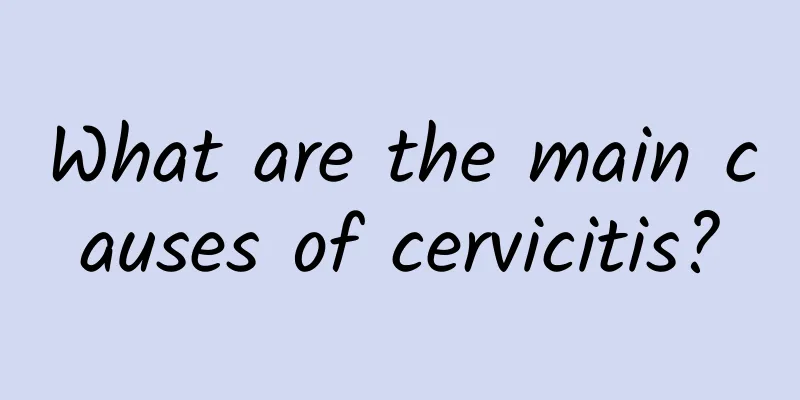Will subserosal uterine fibroids affect pregnancy? Will subserosal uterine fibroids cause infertility?

|
Pregnancy places certain demands on women's bodies, and gynecological diseases can affect fertility. So, will subserosal uterine fibroids affect pregnancy? The characteristics of subserosal uterine fibroids are that subserosal uterine fibroids and intramural small fibroids usually do not have obvious menstrual changes. There is acute abdominal pain when the pedicle is twisted. When the subserosal uterine fibroids turn red, the abdominal pain is severe and accompanied by fever. Subserosal uterine fibroids are common in lower abdominal swelling and back pain, which are aggravated by menstruation. Subserosal uterine fibroids have an impact on pregnancy: 1. Fibroids growing in the lumen of the fallopian tube can stretch and twist the surface of the fallopian tube, squeeze the lumen, affect its patency, or displace the ovary, expand the distance between the ovary and the fallopian tube, and hinder the egg retrieval function of the fallopian tube fimbria. 2. Uterine fibroids can make the frequency, range and duration of uterine contractions higher than the normal baseline, interfering with the implantation of fertilized eggs or causing miscarriage after implantation. When fibroids are accompanied by uterine periosteal proliferation, it means that the ovaries do not ovulate. Fibroids cause uterine bleeding, infection, and blockage of fallopian tubes, which can cause infertility. Larger uterine fibroids deform the uterine cavity, which is not conducive to the passage of sperm, implantation of fertilized eggs and fetal development. 4. Uterine fibroids growing in the cervix can compress the cervical canal, obstruct the passage or change the direction of the cervix, moving it away from the semen pool in the posterior fornix, making it difficult for sperm to enter the cervix. 5. Uterine fibroids growing under the mucosa of the uterine cavity are like placing a spherical intrauterine device in the uterine cavity, which hinders fertility. The ischemia, necrosis and atrophy of the endometrium on the surface of the uterine cavity are also not conducive to the implantation of the fertilized egg. Fibroids that grow near the uterine horns can compress the opening of the fallopian tubes, causing blockage. |
<<: What are the symptoms of subserosal uterine fibroids? How to treat subserosal uterine fibroids?
Recommend
What are the main items of pre-abortion inspection?
Abortion is a surgery to terminate a woman's ...
What are the symptoms before menopause? See what the doctor says
When women enter menopause, their bodies age very...
What does polycystic changes in the left ovary mean?
As we all know, ovarian disease is a common gynec...
Irregular menstruation caused by endometritis
Endometritis may cause irregular menstruation. It...
Things to know about pelvic inflammatory disease!
If female friends do not want to suffer from pelv...
What are the reasons that easily lead to cervical erosion? Ten dietary recommendations for treating cervical erosion
There are many reasons for cervical erosion, and ...
One person suffers a stroke every 10 minutes! Nutritionist Lin Shihang: 4 dietary tips to avoid the threat of stroke
The arrival of low temperatures and cold fronts i...
What should I pay attention to when I have cervical precancerous lesions?
What are the nursing measures for female cervical...
Can drinking cactus boiled water cure uterine fibroids?
Drinking cactus water cannot cure uterine fibroid...
How much does it cost to abort a cornual pregnancy?
How much does it cost to have an abortion for cor...
What are the early symptoms of cervical erosion?
Everyone knows that cervical erosion is a common ...
What are the causes of irregular menstruation?
Irregular menstruation refers to abnormalities in...
How to differentiate vulvar leukoplakia from vitiligo
Vulvar leukoplakia and vitiligo are similar to a ...
Can cervical erosion of degree 3 cause vulvar itching?
Can cervical erosion of degree 3 cause vulvar itc...
What are the effects of a cold after miscarriage on the body?
A cold after miscarriage may burden the body and ...









